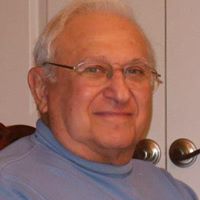Robert Louis Pollack
age ~54
from Wall Township, NJ
- Also known as:
-
- Robert Lou Pollack
- Robert L Pollack
- Robert R Pollack
Robert Pollack Phones & Addresses
- Wall Township, NJ
- Manahawkin, NJ
- Belmar, NJ
- Philadelphia, PA
- Staten Island, NY
- Las Vegas, NV
- Chicago, IL
- 3700 Conshohocken Ave #1, Philadelphia, PA 19131
Work
-
Company:Raritan computer inc.
-
Address:400 Cottontail Ln, East Millstone, NJ 08873
-
Phones:732 764-8886
-
Position:Vp, global market development
-
Industries:Computer Peripheral Equipment
Education
-
Degree:Graduate or professional degree
Specialities
Buyer's Agent • Listing Agent
Us Patents
-
Context-Based Routing Of Requests In A Service-Oriented Architecture
view source -
US Patent:8516116, Aug 20, 2013
-
Filed:Nov 30, 2006
-
Appl. No.:11/565378
-
Inventors:Robert H. Pollack - Philadelphia PA, US
-
Assignee:Accenture Global Services Limited - Dublin
-
International Classification:G06F 15/173
G06F 15/16 -
US Classification:709225, 709203, 709224, 709226, 709228, 709229
-
Abstract:Context-based routing of requests in a service-oriented architecture (SOA) is achieved by using context information received from service providers to make routing decisions. Service providers publish information about their context on a publish-and-subscribe channel. A router (e. g. , a JBI normalized message router) subscribes to the channel to receive the context information, and may store the context information in a context repository. A consumer issues a service request specifying a context, and the router uses the context information received from the service providers to select the service provider that best satisfies the context. The request is then routed to the selected service provider.
-
Distributed Scenario Generation
view source -
US Patent:20060075391, Apr 6, 2006
-
Filed:Oct 5, 2004
-
Appl. No.:10/958561
-
Inventors:Laurence Esmonde - West Chester PA, US
Michael Horton - Ambler PA, US
Bryan Hunter - Collegeville PA, US
Mark Kilby - Altamonte Springs FL, US
John Neyer - Harleysville PA, US
David Perme - Wayne PA, US
Robert Pollack - Philadelphia PA, US
James Solderitsch - Rosemont PA, US
Peter Solderitsch - Havertown PA, US
Bryan Tedesco - Downington PA, US -
International Classification:G06F 9/45
-
US Classification:717136000
-
Abstract:A Scenario Generation Framework is described. The Framework provides the organizational infrastructure through which scenario data—a shared set of data supporting enterprise application coordination and interoperation—can effectively be managed from a centralized location. From this location, the framework provides capabilities whereby scenario data, described using a published data representation format, can be copied, viewed, formally compared, modified and combined with other segments of scenario data. Also from this location, suitably transformed data can be communicated to applications for use in initializing their execution in concert with other applications. In the preferred embodiment of the framework, workflow management capabilities are included to allow distribution and control of data preparation activities and an integrated workstation is made available to facilitate data manipulation and modification.
-
Isolation Of Amino Acids And Related Isolates
view source -
US Patent:20060106226, May 18, 2006
-
Filed:Jan 11, 2006
-
Appl. No.:11/330572
-
Inventors:Robert Pollack - Philadelphia PA, US
John Godfrey - Huntingdon Valley PA, US
Sharon Gaglia - Veneta OR, US -
International Classification:C07C 227/40
C07D 233/61
C07D 209/20 -
US Classification:548498000, 562443000, 562444000, 548335500
-
Abstract:Embodiments of the present invention provide processes for extracting amino acids from mixtures of amino acids, and compositions and mixtures formed therefrom. Applications include separating and/or isolating non-aromatic amino acids, and/or separating aromatic amino acids into at least one fraction containing phenylalanine and tyrosine and a fraction containing L-β-3-indolylalanine (L-β-3) and providing natural or other amino acid mixtures thereof. The source of amino acids may include a natural source, such as an enzymaticaly hydrolyzed protein or other natural protein hydrolysates containing mixtures of free amino acids. The processes of embodiments of the present invention include contacting the mixture of amino acids with a resin or hydrophobic substance that is attractive to aromatic amino acids but not attractive to aliphatic amino acids to separate the aromatic amino acids from the rest of the mixture.
-
Methods And Products Of Amino Acid Isolation
view source -
US Patent:20070161784, Jul 12, 2007
-
Filed:Jan 11, 2006
-
Appl. No.:11/330573
-
Inventors:Robert Pollack - Philadelphia PA, US
Sharon Gaglia - Veneta OR, US -
International Classification:C07K 1/12
C07C 229/02 -
US Classification:530414000, 562553000
-
Abstract:Embodiments of the present invention provide processes for extracting amino acids from mixtures of amino acids, and compositions and mixtures formed therefrom. Applications include separating and/or isolating non-aromatic amino acids, and/or separating aromatic amino acids into at least one fraction containing phenylalanine and tryrosine and a fraction containing L-β-3-indolylalanine (L-β-3) and providing natural or other amino acid mixtures thereof. The source of amino acids may include a natural source, such as an enzymatically hydrolyzed protein or other natural protein hydrolysates containing mixtures of free amino acids. The processes of embodiments of the present invention include contacting the mixture of amino acids with a resin or hydrophobic substance that is attractive to aromatic amino acids but not attractive to aliphatic amino acids to separate the aromatic amino acids from the rest of the mixture.
-
System And Method For Dynamic Data Discovery In Service Oriented Networks With Peer-To-Peer Based Communication
view source -
US Patent:20080104258, May 1, 2008
-
Filed:Oct 30, 2006
-
Appl. No.:11/589131
-
Inventors:Brian O'Neill - Pottstown PA, US
Robert H. Pollack - Philadelphia PA, US -
Assignee:Gestalt, LLC - Camden NJ
-
International Classification:G06F 15/16
-
US Classification:709228
-
Abstract:A method and apparatus for dynamically discovering and communicating data in a communications network are described. A broker in a communications network receives a communication from a first service provider over the communications network, the broker comprising a metabroker and a service broker. The metabroker communicates messages to the service broker within defined time intervals to provide the service broker with any updated information about topics including a first topic. The broker sends information about the first topic to a first service consumer over the communications network within a first time interval from receipt of the communication comprising data about the first topic, and establishes peer-to-peer communication between the first service provider and the first service. The broker receives further communications about topics from multiple service providers over the communications network, and sends further data about to the first topic to the first service consumer.
-
Method And Composition For Increasing Production Of Serotonin
view source -
US Patent:46507892, Mar 17, 1987
-
Filed:Oct 15, 1985
-
Appl. No.:6/787502
-
Inventors:Robert L. Pollack - Philadelphia PA
-
Assignee:Commonwealth Medical Corporation of America - Allentown PA
-
International Classification:A61K 3140
A61K 3144
A61K 3162
A61K 3170
A61K 31435 -
US Classification:514 23
-
Abstract:The production of the neurotransmitter serotonin is increased through administration of a therapeutic composition which includes L-tryptophan in combination with a salicylate, pyridoxine, niacin and a carbohydrate such as fructose. Both the absolute free fraction and the relative amount of the albumin-bound fraction of serum L-tryptophan are increased so that transport of L-tryptophan from the blood plasma across the blood-brain barrier into the brain is increased. Once within the brain, L-tryptophan is converted to serotonin.
-
Method And Composition For Increasing Production Of Serotonin
view source -
US Patent:48533777, Aug 1, 1989
-
Filed:Feb 29, 1988
-
Appl. No.:7/165444
-
Inventors:Robert L. Pollack - Philadelphia PA
-
International Classification:A61K 3135
A61K 3140
A61K 3162
A61K 3170 -
US Classification:514161
-
Abstract:The production of the neurotransmitter serotonin is increased through administration of a therapeutic composition which includes L-tryptophan in combination with a salicylate, an ascorbate, calcium, magnesium, copper, pyridoxine, niacin and a carbohydrate such as fructose. Both the absolute free fraction and the relative amount of the albumin-bound fraction of serum L-tryptophan are increased so that transport of L-tryptophan from the blood plasma across the blood-brain barrier into the brain is increased. Once within the brain, L-tryptophan is converted to serotonin.
-
Method And Composition For Relieving Pain
view source -
US Patent:46394656, Jan 27, 1987
-
Filed:Aug 30, 1985
-
Appl. No.:6/771325
-
Inventors:Robert L. Pollack - Philadelphia PA
Lawrence Durst - Bridgeport PA -
Assignee:Commonwealth Medical Corporation of America - Allentown PA
-
International Classification:A61K 3140
A61K 3170
A61K 31435 -
US Classification:514419
-
Abstract:Intractable chronic pain is eliminated or relieved through administration of a composition including L-tryptophan in combination with fructose, pyridoxine and niacinamide. Each ingredient either promotes the transport of L-tryptophan from the blood plasma across the blood-brain barrier into the brain or promotes the conversion of L-tryptophan within the brain to the neurotransmitter serotonin.
Isbn (Books And Publications)
-
Laboratory Exercises In Microbiology
view source -
Author:Robert A. Pollack
-
ISBN #:0471414123
-
Laboratory Exercises In Microbiology
view source -
Author:Robert A. Pollack
-
ISBN #:0471420824
-
Nutrition, Stress And Aging: An Holistic Approach
view source -
Author:Robert L. Pollack
-
ISBN #:0404632688
-
The Pain-Free Tryptophan Diet
view source -
Author:Robert L. Pollack
-
ISBN #:0446343595
-
The Pain-Free Tryptophan Diet
view source -
Author:Robert L. Pollack
-
ISBN #:0446513172
-
The Faith Of Biology &Amp; The Biology Of Faith: Order, Meaning, And Free Will In Modern Medical Science
view source -
Author:Robert Pollack
-
ISBN #:0231115067
-
Signs Of Life : The Language And Meanings Of Dna
view source -
Author:Robert Pollack
-
ISBN #:0395644984
-
The Missing Moment: How The Unconscious Shapes Modern Science
view source -
Author:Robert Pollack
-
ISBN #:0395709857
Medicine Doctors

Robert A. Pollack
view sourceSpecialties:
Gastroenterology
Work:
Knoxville Gastrointestinal Specialists
1819 W Clinch Ave STE 212, Knoxville, TN 37916
865 523-6418 (phone), 865 523-6587 (fax)
Knoxville Gastrointestinal Specialists
11606 Chapman Hwy STE 4, Seymour, TN 37865
865 523-6418 (phone), 865 523-6587 (fax)
1819 W Clinch Ave STE 212, Knoxville, TN 37916
865 523-6418 (phone), 865 523-6587 (fax)
Knoxville Gastrointestinal Specialists
11606 Chapman Hwy STE 4, Seymour, TN 37865
865 523-6418 (phone), 865 523-6587 (fax)
Education:
Medical School
University of South Florida College of Medicine at Tampa
Graduated: 1988
University of South Florida College of Medicine at Tampa
Graduated: 1988
Procedures:
Endoscopic Retrograde Cholangiopancreatography (ERCP)
Esophageal Dilatation
Colonoscopy
Sigmoidoscopy
Upper Gastrointestinal Endoscopy
Esophageal Dilatation
Colonoscopy
Sigmoidoscopy
Upper Gastrointestinal Endoscopy
Conditions:
Acute Pancreatitis
Benign Polyps of the Colon
Cholelethiasis or Cholecystitis
Cirrhosis
Constipation
Benign Polyps of the Colon
Cholelethiasis or Cholecystitis
Cirrhosis
Constipation
Languages:
English
Description:
Dr. Pollack graduated from the University of South Florida College of Medicine at Tampa in 1988. He works in Knoxville, TN and 1 other location and specializes in Gastroenterology. Dr. Pollack is affiliated with Fort Sanders Regional Medical Center.

Robert W. Pollack
view sourceSpecialties:
Psychiatry
Work:
Psychiatric Associates Of Southwest Florida
6804 Porto Fino Cir STE 1, Fort Myers, FL 33912
239 332-4700 (phone), 888 769-5641 (fax)
6804 Porto Fino Cir STE 1, Fort Myers, FL 33912
239 332-4700 (phone), 888 769-5641 (fax)
Education:
Medical School
SUNY Downstate Medical Center College of Medicine
Graduated: 1973
SUNY Downstate Medical Center College of Medicine
Graduated: 1973
Procedures:
Psychiatric Diagnosis or Evaluation
Psychiatric Therapeutic Procedures
Psychological and Neuropsychological Tests
Psychiatric Therapeutic Procedures
Psychological and Neuropsychological Tests
Conditions:
Anxiety Phobic Disorders
Attention Deficit Disorder (ADD)
Dementia
Depressive Disorders
Anxiety Dissociative and Somatoform Disorders
Attention Deficit Disorder (ADD)
Dementia
Depressive Disorders
Anxiety Dissociative and Somatoform Disorders
Languages:
English
Spanish
Spanish
Description:
Dr. Pollack graduated from the SUNY Downstate Medical Center College of Medicine in 1973. He works in Fort Myers, FL and specializes in Psychiatry.

Robert A. Pollack
view sourceSpecialties:
Diagnostic Radiology
Work:
Consulting RadiologistsConsulting Radiologists LTD
800 E 28 St, Minneapolis, MN 55407
612 573-2200 (phone), 612 573-2274 (fax)
800 E 28 St, Minneapolis, MN 55407
612 573-2200 (phone), 612 573-2274 (fax)
Education:
Medical School
University of Pennsylvania School of Medicine
Graduated: 1980
University of Pennsylvania School of Medicine
Graduated: 1980
Languages:
English
Portuguese
Spanish
Portuguese
Spanish
Description:
Dr. Pollack graduated from the University of Pennsylvania School of Medicine in 1980. He works in Minneapolis, MN and specializes in Diagnostic Radiology. Dr. Pollack is affiliated with Abbott Northwestern Hospital and St Francis Regional Medical Center.

Robert Bruce Pollack
view sourceSpecialties:
Plastic Surgery
Plastic and Reconstructive Surgery
Plastic and Reconstructive Surgery
Education:
Thomas Jefferson University (1988)
Name / Title
Company / Classification
Phones & Addresses
Vp, Global Market Development
Raritan Computer Inc.
Computer Peripheral Equipment
Computer Peripheral Equipment
400 Cottontail Ln, East Millstone, NJ 08873
CEO
Home Lighting Center
Management Services
Management Services
72-10 Austin St., Flushing, NY 11375
President
Town & Country Auto Parts Inc
Auto and Home Supply Stores
Auto and Home Supply Stores
430 Jacksonville Rd, Hatboro, PA 19040
Website: tcpartsonline.com
Website: tcpartsonline.com
President, Treasurer, Secretary
R Pollack Inc
Medical Practice · Insurance Agent/Broker
Medical Practice · Insurance Agent/Broker
810 Lafayette Rd, Bryn Mawr, PA 19010
610 525-3586
610 525-3586
Lawyers & Attorneys

Robert Pollack - Lawyer
view sourceOffice:
Law Offices of Robert L. Pollack, Q.C.
Specialties:
Criminal Law
ISLN:
904377680
Admitted:
1973
University:
University of Manitoba, B.A.
Law School:
University of Manitoba, LL.B.
News

How Nancy Hopkins and her tape measure revealed the extent of sexism in science
view source- After finishing her postdoctoral studies with Watson and Robert Pollack at the Cold Spring Harbor Laboratory in Laurel Hollow, New York, Hopkins arrived at MIT in 1973 as only the second woman ever on the faculty in the biology department. She was going against the advice of Nobel laureate geneticis
- Date: Mar 27, 2023
- Category: Science
- Source: Google

Illinois among states extending bar exam deadlines after software havoc
view source- Robert Pollack fromNYU Law Schoolsaid: "This happens every year. They knew months in advance the day this was going to happen. Especially after we paid so much money, I would expect them to be prepared for it."
- Date: Jul 30, 2014
- Category: U.S.
- Source: Google
Youtube

Robert Pollack
view source
Robert Pollack
view source
Robert Pollack
view source
Robert Pollack
view source
Robert Pollack
view source
Robert Pollack
view source
Robert Pollack
view source
Robert Pollack
view sourceClassmates

Robert Pollack
view sourceSchools:
Blue Mountain High School Schuylkill Haven PA 1971-1975

Robert Pollack (Robert)
view sourceSchools:
Swissvale High School Swissvale PA 1982-1986
Community:
Dorothy Mcgaha, Jim Wightman

Robert Pollack
view sourceSchools:
Richard High School Riverview MI 1971-1975
Community:
Cheryl Bourrie

Robert Pollack (Robert Po...
view sourceSchools:
Newark Catholic High School Newark OH 1972-1976

Robert Pollack
view sourceSchools:
Alma Schrader Elementary School Cape Girardeau MO 1960-1967, Vanguard School Lake Wales FL 1968-1970, University High School Cape Girardeau MO 1969-1973, Columbia College Columbia MO 1973-1977
Community:
Mike Donovan, Dennis Tilton, Michael Schull, Greg Lamont, Irwin Joseph, Cindy Szabad, Linda Davis, Michelle Papagno, Cheryl Wiederkehr

Robert Pollack
view sourceSchools:
State University of New York (SUNY) at Binghamton Binghamton NY 1971-1975
Community:
Sari Lippert, Richard Younger, Laura Gentile

Amity Regional High Schoo...
view sourceGraduates:
Cynthia Puglisi (1961-1965),
dona cassella (1971-1975),
terri watts (1980-1984),
robert pollack (1965-1969),
Kelly Dougherty (1978-1982)
dona cassella (1971-1975),
terri watts (1980-1984),
robert pollack (1965-1969),
Kelly Dougherty (1978-1982)

University High School, C...
view sourceGraduates:
Robert Pollack (1969-1973),
Jeff Summers (1986-1990),
Mahir Awwad (1995-1999),
Jerry Reynolds (1951-1955),
Brian Matthews (1979-1983)
Jeff Summers (1986-1990),
Mahir Awwad (1995-1999),
Jerry Reynolds (1951-1955),
Brian Matthews (1979-1983)
Myspace
Flickr
Plaxo

Robert Pollack
view sourceFt Myers, FlMedical Director Park Royal Psychiatric Hospital Past: Private Practice at RObert W Pollack MD PLLC
Googleplus

Robert Pollack
Work:
TMS health - Learning and development trainer

Robert Pollack

Robert Pollack

Robert Pollack

Robert Pollack

Robert Pollack
Get Report for Robert Louis Pollack from Wall Township, NJ, age ~54



![They Shoot Horses, Don't They ? (1969) [HD] - Sydn... They Shoot Horses, Don't They ? (1969) [HD] - Sydn...](https://i.ytimg.com/vi/qsKQiVJkEvI/hq720.jpg?sqp=-oaymwEcCNAFEJQDSFXyq4qpAw4IARUAAIhCGAFwAcABBg==&rs=AOn4CLBRdsvYRtWhdND6oZ6LESAOH5o3GA)












